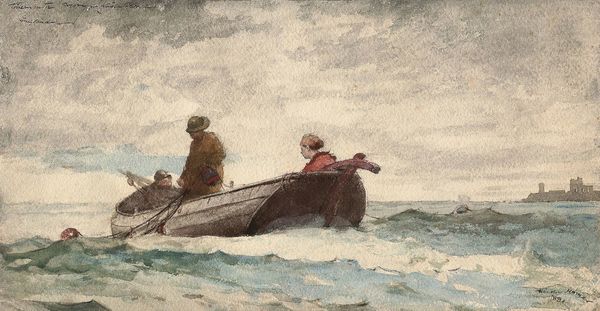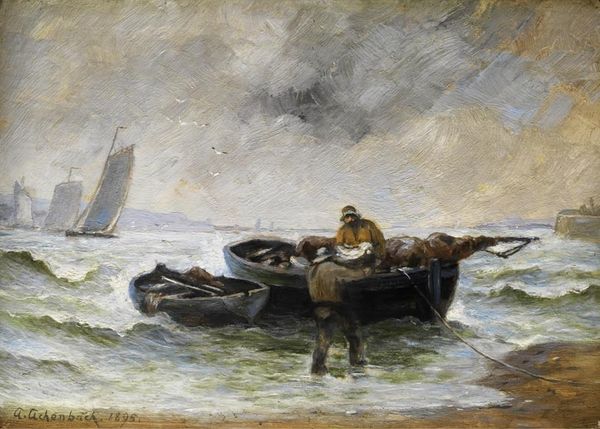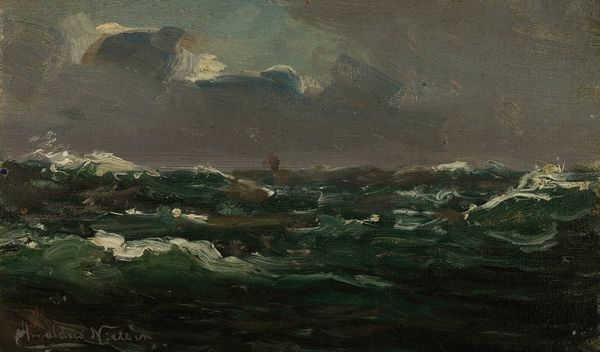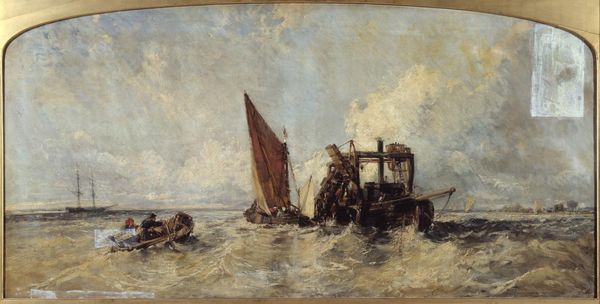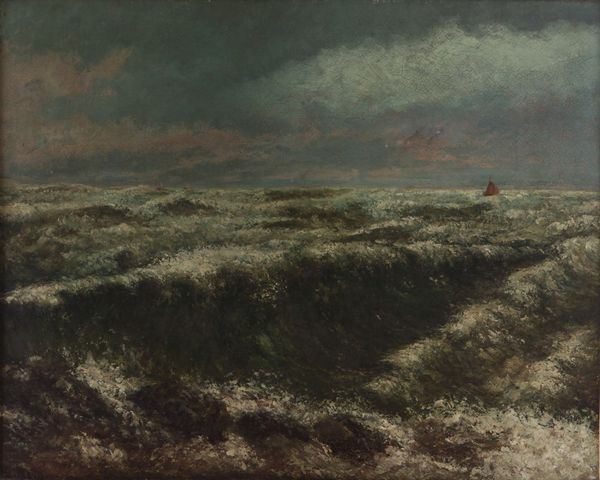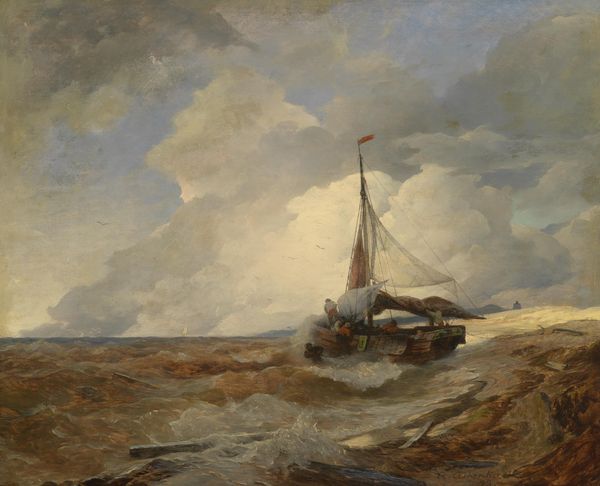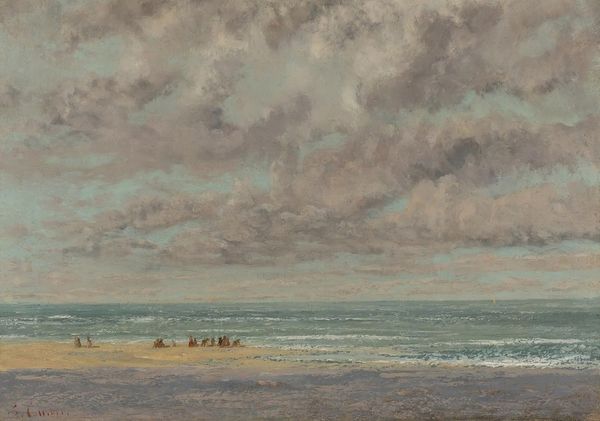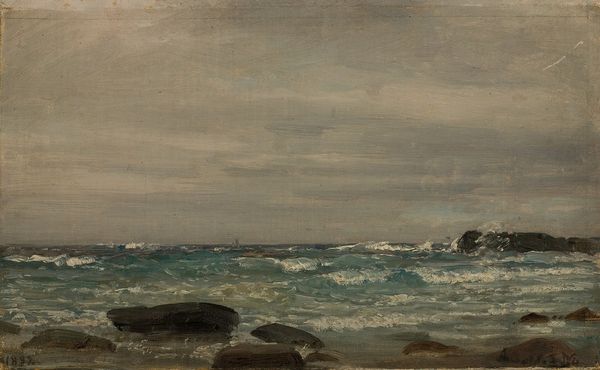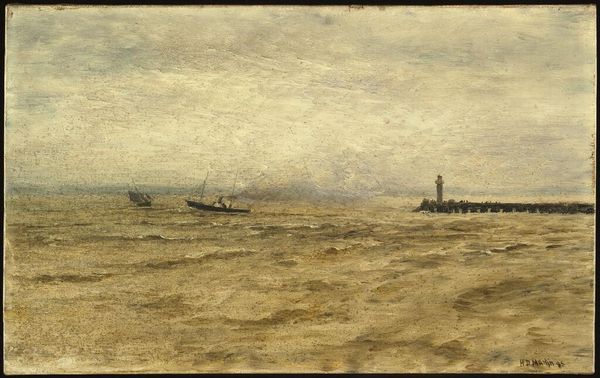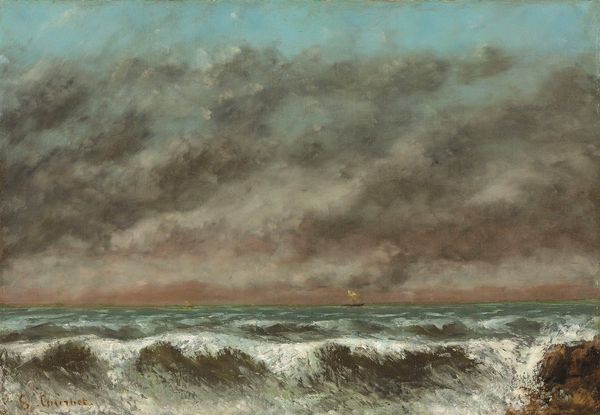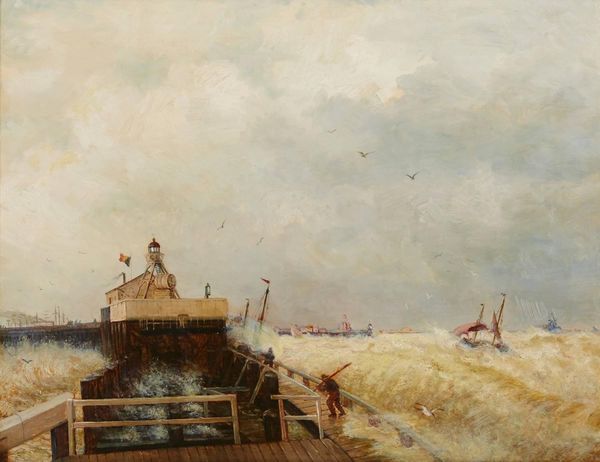
painting, charcoal
#
painting
#
impressionism
#
landscape
#
charcoal drawing
#
charcoal
#
charcoal
#
watercolor
#
realism
Copyright: Public Domain: Artvee
Elihu Vedder painted this scene of a fishing hut off the pierhead in Viareggio, Italy, using oil on board. What does it tell us about the intersection of labour, leisure and the late nineteenth-century art market? The muted palette, heavy atmosphere, and focus on working life suggest a social realism that aimed to represent the everyday life of the Italian working class. But Vedder was an American artist, part of a community of expatriate painters for whom Italy was a source of aesthetic inspiration and a place of relative freedom. How might we read this painting as an instance of a tourist gaze? Vedder was drawn to the picturesque aspects of Viareggio, but how aware was he of the actual social conditions of the people who lived and worked there? To explore these questions, research into Vedder's biography, the art market of the period, and the social history of Viareggio would all be invaluable.
Comments
No comments
Be the first to comment and join the conversation on the ultimate creative platform.
